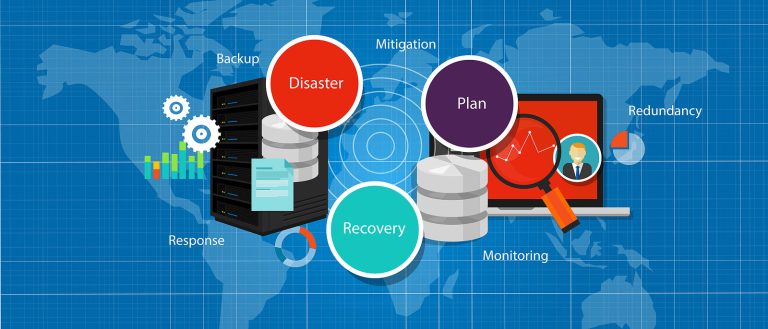Setting the Stage: A Prelude to Managed Service Providers Mastery
Welcome to the age of managed service providers, where cutting-edge service meets complex technical landscapes. Outdated methods won’t cut it; innovation and service are essential.
Table of Contents
ToggleThis guide through the Managed Service Provider (MSP) world introduces critical practices that transform service delivery into lasting client partnerships that offer levels of service quality companies struggle to maintain internally.
Managed Service Provider Best Practices

Service Excellence is Key for Managed Service Providers
Service excellence is the holy grail of managed services operations. It’s not just about fixing problems as they arise; it’s about predicting them before they even whisper “hello.”
Managed services require proactive monitoring, artificial intelligence, and a dash of technical savoir-faire to ensure your service isn’t just reactive but psychic in its ability to address clients’ needs.
Service quality eliminates downtime through high-availability design and operations and uses cutting-edge tools that secure the operation.
Tailoring Service Offerings
MSPs understand the importance of defining customized service offerings, which are the bread and butter of any MSP.
From cloud services, data security protocols, and device management to disaster recovery plans, the key is to stitch services that snugly fit the unique contours of each client’s business.
This isn’t just about providing services; it’s about crafting solutions that resonate with their client’s specific challenges and aspirations and improve customer satisfaction.
Offerings can include and combination of the following services, frequently outsourced as commodity services:
- Cloud software services
- Data center operations
- Device management
- Network and voice services
- Application management
- Technical architecture
- Business continuity and disaster planning
- Security vulnerability management
Emphasizing Data Security

For managed services, security is not just a concern; it’s a currency. With cyber threats lurking everywhere, MSPs must erect fortresses around their clients’ data.
This means deploying strong security measures, regular security audits, and educating clients on the importance of security best practices.
It also means securing every device that touches the enterprise network with strong patch management and security vulnerability management, whether this is managed internally or by the MSP.
In the MSP business, a single security breach can tarnish the MSP’s reputation faster than you can say “firewall.”
Ensuring Managed Services Quality
Quality is not an act; it’s a habit. For MSPs, this means developing strong service level agreements and delivering services that meet and exceed them.
It also means ensuring a customer experience that leads to long-term relationships.
From ensuring seamless integration of new technologies to maintaining high response times, the goal is to set the bar so high that excellence becomes your brand’s synonym.
Quality can also be ensured by managing technical debt: ensuring that any customization to software and tools used by clients doesn’t require superhuman effort to upgrade and maintain.
Enhancing Business Results with Managed Services
At the end of the day, an MSP’s success hinges on its operations’ efficiency and effectiveness, supporting business success.
This includes everything from leveraging the right tools for network monitoring and remote support to fostering a culture of continuous improvement and innovation within each team.
Customer satisfaction is also key: understanding client’s needs, regular communication and overcoming potential challenges are key practices for the managed service provider.
Implementing Proactive Maintenance and Monitoring

For managed service providers, being proactive isn’t just a strategy; it’s a lifeline and one of the best practices that are key to the industry.
Proactive maintenance and continuous monitoring are like the guardians at the gate, ensuring potential issues are nipped in the bud before they bloom into full-blown disasters.
- Proactive Monitoring: Being proactive isn’t about waiting for alarms to go off. It’s about using the right tools to watch systems 24/7, predicting issues, and addressing them in real-time via automation wherever possible. This vigilance ensures client operations run smoothly, minimizing downtime and maximizing productivity.
- Skilled Technicians: As the industry changes with AI, skilled technicians are critical to any MSP; their expertise and quick reflexes are crucial. Ongoing training ensures they’re not just keeping up with new technologies but are steps ahead, ready to implement solutions that keep clients ahead of the curve.
- Disaster Recovery Plans: Hope for the best, plan for the worst. A robust strategy ensures that should the unthinkable happen, your clients’ businesses are uninterrupted. Continuity is about predicting and mitigating potential disasters and having fall-back plans that enable recovery in seconds, not days.
Managed service providers can cost-effectively provide a proactive operational environment as they scale proactive tools and solutions across multiple clients.
This is one positive aspect of offering infrastructure services to clients rather than clients attempting to operate independently.
Prioritizing the People, Technical Expertise and Training
Managed service providers’ strength lies not only in the tools they use but in the knowledge and skills of their team.
- Hiring the Right Profile: Success in the MSP world isn’t just about having the right tools; it’s about having the right people wielding them. Hiring individuals who not only possess the technical chops but also embody the values and vision of your MSP ensures a team that’s not just competent but also cohesive and committed to excellence. This strategic alignment between skill and ethos is the linchpin in delivering quality services and achieving long-term success.
- Ongoing Training: With the growth of artificial intelligence, the tech world is evolving faster than ever. Regular training sessions are critical to ensure technicians are armed with the latest knowledge to tackle emerging challenges. It also ensures they are familiar with new tools and features that can support their efforts.
- Technical Support: It’s not just about solving problems; it’s about being a beacon of support for clients, guiding them through technical challenges with ease and expertise. Effective support transforms a service provider into a trusted partner, able to help customers make informed decisions.
- Security Expertise: With cyber threats becoming more sophisticated, having a team well-versed in the latest security protocols is non-negotiable. This expertise is crucial in safeguarding client data and maintaining trust.
Choosing the Right Clients: A Strategic Pillar in Managed Services Success
The right MSP partner can elevate a company’s performance or damage their reputation. Partnering with the right clients isn’t about exclusivity but compatibility.
This strategic choice is crucial in harmonizing your MSP’s capabilities with client needs, ensuring a partnership that’s both fruitful and sustainable.
Successful MSPs know that service-level agreements are a communications tool for defining the relationship and ensuring customers know and understand the support they will receive.
Additional approaches include:
- Aligning Visions and Values: The cornerstone of a solid MSP-client relationship is a shared vision for success and a common set of values. This synergy fosters a collaborative environment where both parties work towards unified goals.
- Assessing Technical Compatibility: Before jumping into a partnership, be honest when evaluating whether services and technological strengths match the client’s needs and challenges. This compatibility ensures the ability to deliver effectively, meeting and exceeding client expectations.
- Understanding Business Models: Each client has a unique business model and operational needs. Opt for clients whose business models complement your MSP’s approach to service delivery and who understand service management best practices. This understanding enables you to tailor your services more effectively, creating a customized experience that adds value.
Developing the right customers is not about setting barriers; it’s about ensuring a harmonious partnership that drives mutual growth, satisfaction, and success.
Establishing Optimal Pricing: Balancing Value and Viability
Setting the right price for managed services isn’t just about keeping the lights on; it’s a delicate art that balances delivering undeniable value and ensuring sustainability and growth.
Successful MSPs use the right tools and practices to deliver support with high operational efficiency.

- Understanding Your Costs: A thorough understanding of costs is the foundation of any pricing strategy. This includes direct costs like labor and software licenses and indirect costs like overheads. Knowing your costs inside out ensures that your pricing covers these expenses and leaves room for a healthy margin.
- Assessing Market Rates and Competitor Pricing: Keeping an eye on the competition and the general market rates can provide valuable benchmarks for any pricing strategy. However, it’s crucial to differentiate value rather than just price. Aligning prices too closely with lower-end market offerings can undermine the perceived value of MSP services.
- Value-Based Pricing: Transitioning from cost-plus to value-based pricing can significantly enhance client satisfaction and profitability. By focusing on the value services bring to a client’s business—such as increased efficiency, reduced downtime, and improved security—MSPs can justify higher price points that clients are willing to pay for tangible benefits.
- Flexibility and Scalability: Offering tiered pricing models based on service levels and client needs can cater to a broader client base while ensuring scalability. This flexibility allows clients to choose a service package that fits their budget and requirements, with the option to scale up as their business grows.
- Regular Reviews and Adjustments: The MSP landscape and business operations are dynamic, so an MSP’s pricing strategy should be as well. Regularly review and adjust pricing to reflect cost changes, the value delivered, and market conditions. This ensures your pricing remains competitive, fair, and aligned with the evolving needs of your clients and business.
Foster Strong Client Relationships
A strong, trusting relationship with its clients is at the heart of every successful MSP. These relationships are the foundation upon which long-term success is built.
- Effective Communication: Clear, regular communication is the golden key to client satisfaction. It’s about setting clear expectations, providing regular updates, and being transparent about challenges and solutions.
- Understanding Client Needs: The best services are tailored to each client’s needs and goals.
- Long-term Partnerships: A successful managed service provider aims to provide a service and become integral to each client’s growth journey. Building long-term partnerships means investing in their success and creating a symbiotic relationship where both parties grow stronger.
Conclusion
Being successful as a managed service provider is about recognizing best practices that enable operations to be proactive, not reactive.
It’s about not just meeting expectations but exceeding them. And most importantly, it’s about building relationships that turn clients into partners.
Clients are looking for a cost-prohibitive level of expertise to deliver internally and for a partner that can deliver a more stable operating environment at less cost due to their ability to scale support.
Successful MSPs can deliver on this promise.





